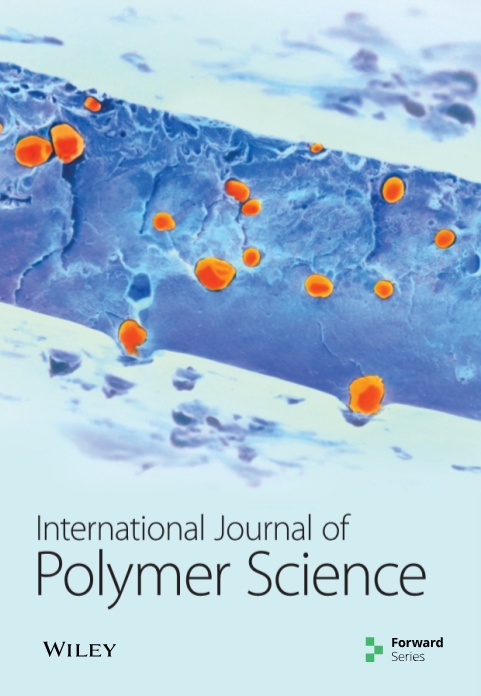水葫芦纤维的提取及理化热力学特性研究
IF 4.4
4区 化学
Q2 POLYMER SCIENCE
引用次数: 0
摘要
在喀麦隆杜阿拉的河岸上,漂浮植物的存在正成为一个无法控制的问题,尤其是在博纳贝里市,那里的水葫芦正在以令人难以置信的速度扩张。本研究的目的是评估水葫芦纤维的机械和物理化学性能的纸浆制造。为此,按照ISO 13934-1:2013对纤维束进行了拉伸试验,热重分析(TGA),根据ASTM 1972和1977进行了化学成分评估,并进行了吸收率。结果表明,该纤维由多种截面不规则的原纤维组成,平均直径为0.02 ~ 0.09 mm。纤维吸水率为自身重量的42.03%,密度为1.23 ~ 1.45 g/cm3。力学试验表明,该纤维的最大抗拉强度约为0.64 MPa,比模量为6.45 MPa/g/cm3,断裂伸长率为1.8%。纤维素、半纤维素和木质素含量分别为68.3%、11.3%和7.4%,果胶和灰分含量分别为4.8%和7.8%。因此,为了确定该植物是否适合制浆造纸,本研究对其纤维性能进行了研究。结果表明,水葫芦纤维各项性能均优于亚麻、稻草和黄麻纤维,但不及丝棉和甘蔗渣纤维。鉴于上述信息,水葫芦已被认为是纸浆和造纸工业的潜在原料。本文章由计算机程序翻译,如有差异,请以英文原文为准。
Extraction and Physicochemical and Thermomechanical Characterizations of Water Hyacinth Fibers Eichhornia crassipes
The presence of floating plants is becoming an uncontrollable issue on the banks of Douala, Cameroon, notably in the city of Bonaberi, where the water hyacinth is expanding incredibly quickly. The aim of this study is to evaluate the mechanical and physicochemical performance of water hyacinth fibers for pulp manufacture. To this end, tensile tests on fiber bundles in accordance with ISO 13934-1:2013, thermogravimetric analysis (TGA), chemical composition evaluation in accordance with ASTM 1972 and 1977, and absorption rate were carried out. The results obtained indicate that the fiber is composed of a variety of fibrils with irregular cross-sections, with an average diameter ranging from 0.02 to 0.09 mm. The fibers absorb 42.03% of their weight in water, and their density ranges from 1.23 to 1.45 g/cm3. According to mechanical tests, the fiber has a maximum tensile strength of around 0.64 MPa, a specific modulus of 6.45 MPa/g/cm3, and an elongation at break of 1.8%. For the chemical characteristics of the fiber, cellulose, hemicellulose, and lignin contents are 68.3%, 11.3%, and 7.4%, respectively, while pectin and ash content concentrations are 4.8% and 7.8%, respectively. Thus, in order to determine whether the plant is suitable for making pulp and paper, this investigation was conducted to examine its fiber properties. It was found that the water hyacinth fibers were superior to flax straw and jute fibers in all qualities, but not as good as silk cotton and bagasse fibers. Given the information above, water hyacinth has been recognized as a potential raw material for the pulp and paper industries, though.
求助全文
通过发布文献求助,成功后即可免费获取论文全文。
去求助
来源期刊

International Journal of Polymer Science
POLYMER SCIENCE-
CiteScore
6.10
自引率
0.00%
发文量
55
审稿时长
>12 weeks
期刊介绍:
The International Journal of Polymer Science is a peer-reviewed, Open Access journal that publishes original research articles as well as review articles on the chemistry and physics of macromolecules.
 求助内容:
求助内容: 应助结果提醒方式:
应助结果提醒方式:


